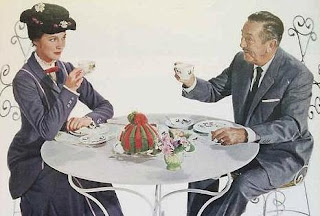"The big thing is “ yes if ” consulting—the “ yes, if ” message and not “no, because.” “Yes, if ” tells you what you can do with a project if you make changes—“no, because” just kills it."
Buzz Price was a pioneer. He was a numbers man, an economist, and an unlikely contributor to Walt Disney's dreamy scheme for a family-friendly amusement park. But just like the artists and craftspeople that Walt challenged his entire career, Buzz Price wasn't hamstrung by silly things like "job descriptions" and deference to purported experts and specialists. The people busy devising this happy place knew they were inventing something decidedly different. Even in those nascent Disneyland days, it was clear that they were the only experts, learning what they knew on the fly.Harrison "Buzz" Price
There's nothing I can say about Buzz Price that hasn't been said. I met the guy precisely once. It was brief and good natured, but nothing remarkable (actually, it was really remarkable for me).
But Buzz's story, his "quick and dirty" analysis, and his "yes if" approach to a project's challenges have been a real inspiration, ever since I read his autobiography, Walt's Revolution: By the Numbers. It's a sweeping story, one you owe yourself a couple of passes through. Buzz craftily stitches seemingly-disconnected events, changing market forces, and a cast of hundreds into a single, very human story about an unlikely guy with a quick brain, a thirst for knowledge, and an amazing work ethic.
Buzz brought meaning to a world of random dynamics. He created tools, processes, and a new vocabulary to filter and share all of this.
It's a testament to the quality and the foresight of Buzz's work that the concepts he invented and employed are used by theme park developers just as frequently as other innovations--like animatronics, high-capacity ride systems, and single-ticket attractions--that sprouted up at the same time. Actually, the work Buzz did is far more influential and pervasive. It long ago extended beyond theme parks. Zoos, museums, retail, dining destinations, and countless other forms of "dimensional entertainment" have all put Buzz's good work to use.
Thanks for everything you created, Buzz. And, especially, thanks for taking the time to reflect on what it meant and writing that down for shlubs like me to learn from. Farewell.




